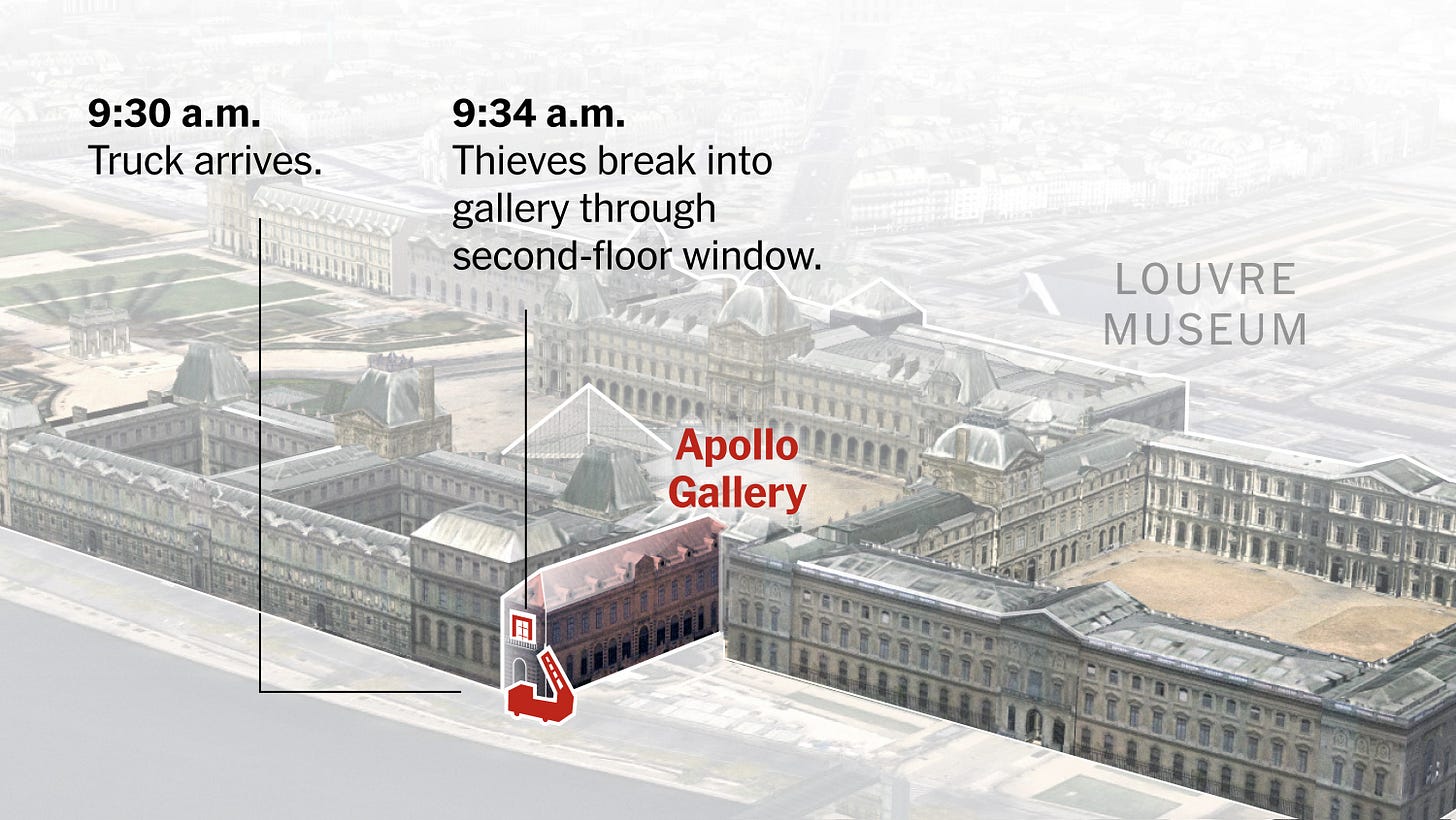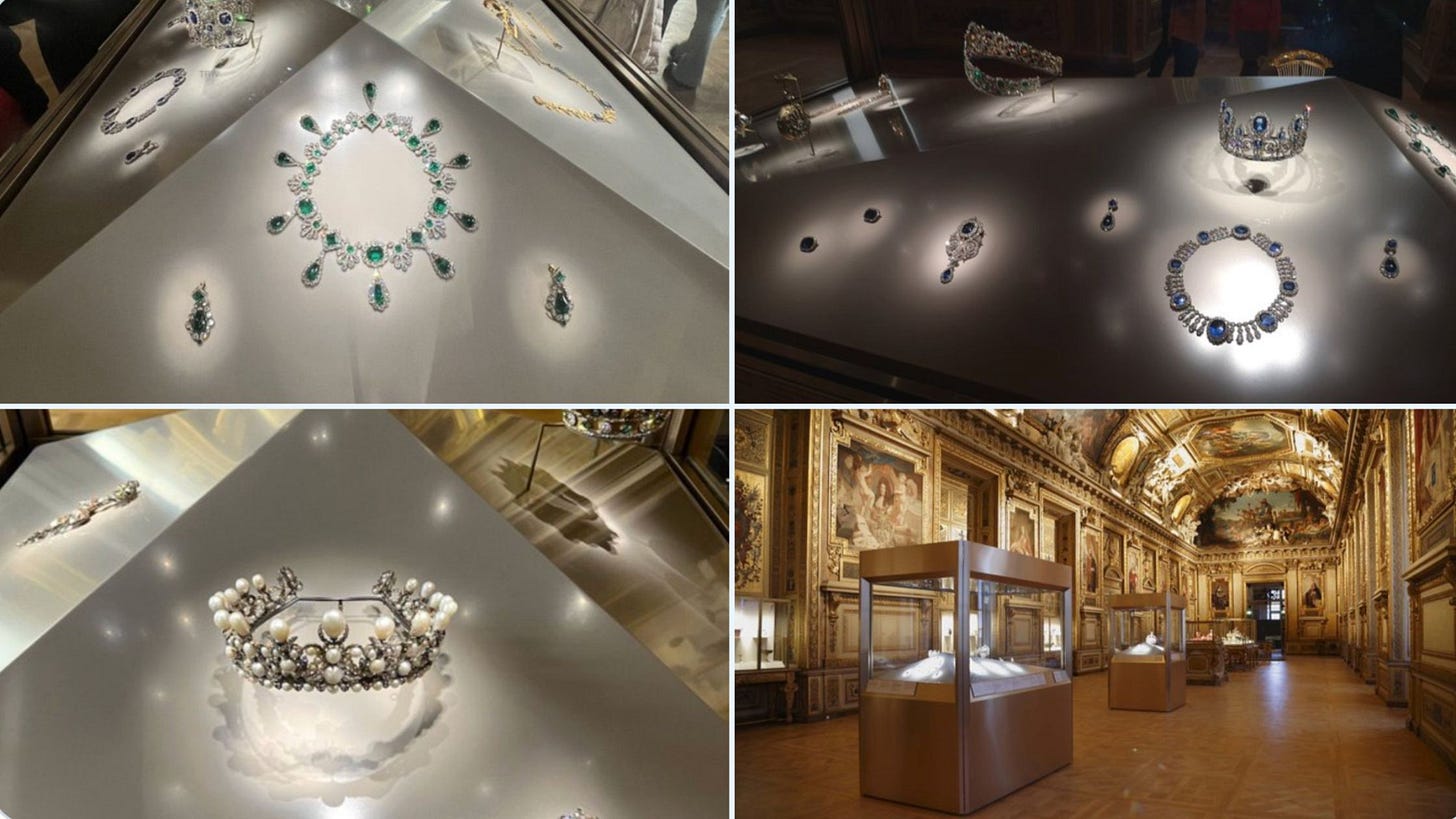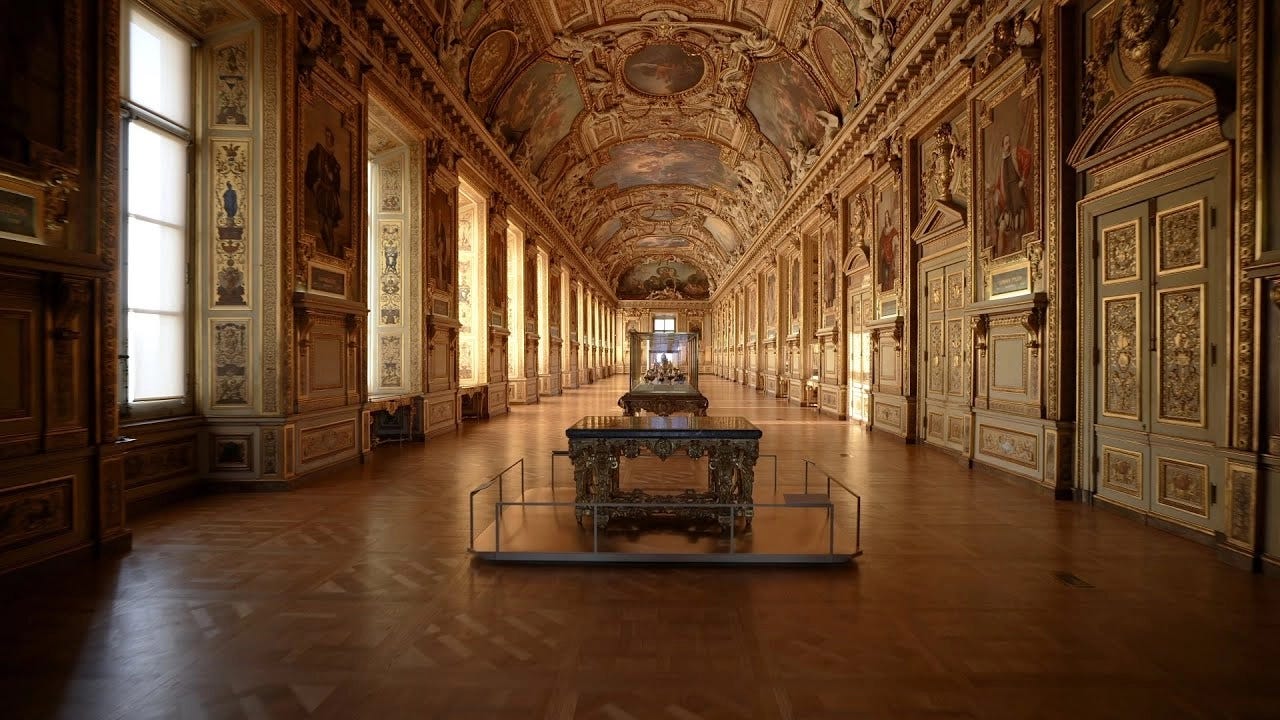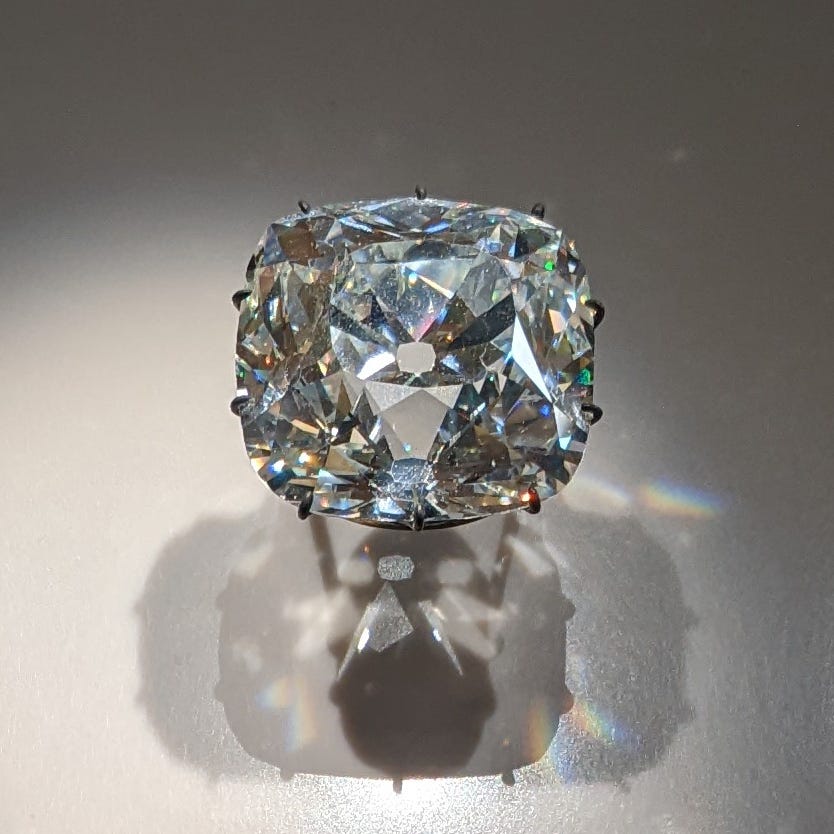The Louvre Robbery: How Thieves Stole the Impossible
A daylight heist at the Louvre museum – how audacious were the thieves, what was lost, and why the world is still reeling.
It was Sunday, 19 October 2025, just after the doors of the Louvre opened for the day. Inside the glass pyramid, tens of thousands of visitors streamed through, cameras clicked, the museum’s heartbeat pulsed as usual. At precisely 9:30 a.m. local time, four men — disguised, efficient, silent — mounted a truck-hoist along the Seine-facing facade of the Louvre. They ascended to a first-floor window, cut through the glass with power tools, entered the gilded Galerie d’Apollon and, in less than eight minutes, vanished with some of France’s most priceless royal jewels.
The Heist
Construction workers’ vests. A basket-lift. Scaffolding. The tools of the job laid-out like a scene from a heist flick. The thieves used the basket to reach the window above the museum’s façade, then cut through with a disc-cutter. Alarms were triggered — but by the time security responded, the crew was gone. The entire intrusion, from the window breach to motorcycles speeding away, lasted little more than four to eight minutes.
Inside the Galerie d’Apollon, two display cases were smashed and jewels removed. Escape was via scooters, along the streets of central Paris. One of the stolen items — a crown of Empress Eugénie — was later found discarded near the museum, broken and abandoned.
What Was Taken
According to museum and prosecuting authorities, the haul included eight high-heritage items from the French royal collections (some reports list nine). Selections include:
A sapphire tiara and matching necklace worn by Queen Marie‑Amélie and Queen Hortense.
An emerald necklace and pair of emerald earrings that belonged to Empress Marie‑Louise.
A “reliquary brooch”, a tiara and large bodice brooch formerly belonging to Empress Eugénie.
The crown of Empress Eugénie (recovered, damaged) — studded with 1,354 diamonds and 56 emeralds.
The estimated value? Around €88 million (≈ $102 million), according to Paris Prosecutor Laure Beccuau. But even that number understates the damage: “historic value beyond measure,” she said.
Why the Galerie d’Apollon?
The Galerie d’Apollon is one of the Louvre’s crown jewels (literally). Commissioned by Louis XIV in 1661 and later used to house the French Crown Jewels, its gilded decor and royal provenance make it a magnet for both wonder and risk.
Museum security experts say the thieves chose the gallery knowing its value and visibility. They left behind some of the largest diamonds in the room — the Regent, the Sancy, the Hortensia — likely because those items are traceable or too famous to fence easily. Instead, they selected pieces that could more quickly vanish.
Investigation & Fallout
Over 100 investigators from the Brigade de Répression du Banditisme and the Central Directorate of Judicial Police are now chasing leads: the truck-lift used, fingerprint/main DNA clues, scooter tracking, toll-booth camera footage.
Interior Minister Laurent Nuñez called it a “major robbery… a direct attack on our heritage.” President Emmanuel Macron echoed those sentiments: “This theft is an attack on a heritage we cherish.”
Questions now swirl: how did the thieves get up a crane truck, why did no camera intervene, and why did it take place in daylight in one of the world’s most-visited museums? Some union sources say the Louvre has been under-staffed and under-resourced for years — warnings that may now prove painfully prescient.
Why It Matters
This isn’t just a high-value robbery. It’s a national blow. The jewels weren’t made yesterday — they speak of empire, monarchy, identity. Their theft rips a thread through the narrative of French history. Recovery, if it happens, will be messy; forensic experts warn that once the gems are recut or melted, the crime becomes near-irreversible.
For collectors and watch/boutique-luxury readers like you, the Louvre heist carries lessons beyond art theft: the value of provenance, the limits of security, and how rare objects — be they watches or jewels — carry not just material worth but cultural weight.
🔍 Artifact of the Week
The Regent Diamond – Still secure in the Galerie d’Apollon, the Regent is one of France’s most storied gems. Insulated perhaps by its fame, it stands in contrast to the stolen pieces. It reminds us: the legendary survive, but the vulnerable are prey.







